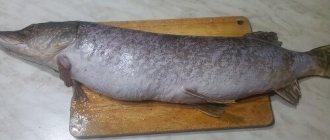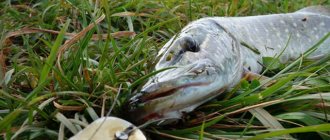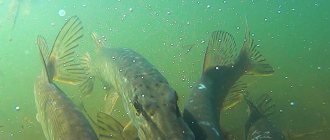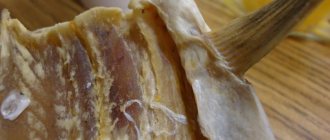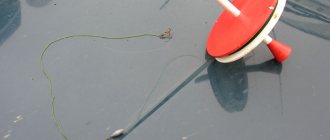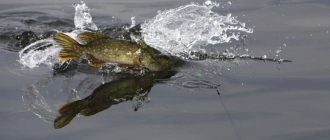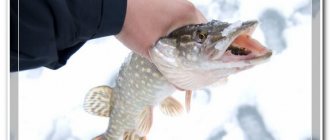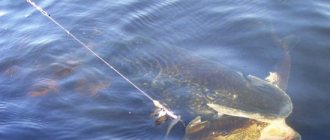Habitat of species and habitat of fish of the genus Pike
Pike belongs to the Pike family with the only genus Pike. The genus includes 5 species, the distribution area of which is the water bodies of the Northern Hemisphere in North America and Eurasia.
Of these five species, 2 species live in the reservoirs of Russia and the republics that were once part of the USSR, now sovereign states - the common and Amur pike. There are 4 species living on the American continent:
- Common pike;
- American redfin;
- Muskinong;
- Black or striped.
The largest representatives of the genus are the Amur pike, the common pike and the muskie. American, or redfin, and black (striped) pike in nature do not gain weight more than 1.5 - 2 kg.
Ordinary

Amur (leopard)
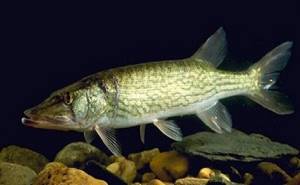
Black
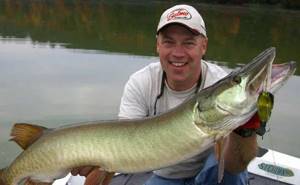
Muskinong

American (redfin)
Of course, having such a huge distribution area with a wide range of different living conditions, species in the course of evolution also have populations that differ in some morpho-ecological characteristics. In other words, subspecies. However, we will not touch them. What is important to us at the moment is the most common species living on our territory, dear to the heart and desired as a trophy - the common pike.
The freckle lives in virtually all rivers, lakes, ponds and reservoirs. Due to the fact that the fish is able to safely tolerate conditions with an oxygen content in water of 2-3 mg/liter and a somewhat acidic environment, it is often found in biotopes such as swamps and peat quarries.
For normal life activity, growth and development, it does not require a large species diversity of food items. Here in Siberia, sometimes there are reservoirs where pike is the only representative of the ichthyofauna. Or one or two other species of fish live next to it. In such cases, the toothy one has highly expressed cannibalism. Without serious human intervention, this does not prevent her from existing peacefully for a long time and producing fertile offspring.
The color of the predator can change depending on its habitat. Lakes with low-transparent water and silted bottoms are inhabited by fish of dark morphs. In reservoirs where the water is clean and transparent - gray-green or yellow, or brownish.
Also, the color of pike changes with age. Adult fish look darker compared to their juvenile counterparts.
Body color
The body color of a pike greatly depends on its habitat. The back is dark, closer to black. The sides are much lighter with small olive-colored spots that form stripes, allowing the predator to perfectly camouflage itself in grass and snags. Pike living in the depths have a darker body color than fish living in shallow water. The toothy predator is capable of changing the color of its body depending on the objects around it. The color change occurs over a large period of its life, so it is not appropriate to compare it with a flounder or a chameleon.
Scales
Pike scales cover the entire body of the fish, from the gill covers to the tip of its tail. Not large, very dense scales are covered with abundant mucus.

Dorsal fins
The dorsal fin of the pike is located closer to the tail above the anus. The color of the dorsal fin depends on the habitat of the fish and is mostly gray-green, and sometimes brown-orange.

Pectoral and anal fins
The pectoral fins are brightly colored in red-orange tones, less often in gray-green. The anal fins are the same color, but have brown spots.
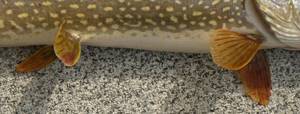
Head and teeth
The pike's head is elongated with a strongly protruding lower jaw. The pike's teeth on the lower jaw have the shape of fangs and are of different sizes; this structure allows the predator to easily capture prey. The upper jaw is strewn with small, very sharp, razor-like teeth directed inside the head, which minimizes the victim’s chances of breaking free.
In the lower jaw of the pike, next to the fangs, there are replacement teeth, usually 2-3. If the main canines break or wear out, replacement teeth take their place, and the old teeth that have lost their functionality die and fall out. This is the period of life when the pike changes its teeth.
Due to the uneven change of teeth, the pike’s mouth simultaneously contains replacement teeth, working fangs and dying old teeth.
When does pike start to spawn?
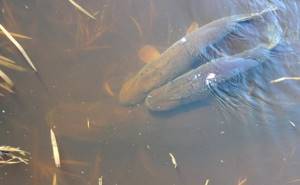
Pike spawn, as befits serious predators, earlier than the food item. By the time the larvae of other fish hatch from the eggs, the juveniles are already growing, which means they already have food for proper nutrition.
Leaving for spawning grounds occurs at a water temperature of 6 - 7 degrees. Therefore, in many northern regions, pike spawning begins under the ice.
That is, if we take into account the conditions in Western Siberia, the pike goes to spawning grounds in late April - early May.
Younger predators, up to 3-4 years old, come to spawn with the “first wave”. Large, adult fish spawn next.
Freckled fish becomes a sexually mature fish, depending on the region of residence, at 2 - 4-5 years of life. At the same time, it reaches a size of about half a meter with a body weight of 600 grams to one and a half kilograms.
These data are somewhat averaged, since much in the life, weight and size of a fish depends on the food supply, the temperature regime of the reservoir, and factors affecting its life activity (biotic and abiotic).
Spawning grounds are located in shallow waters flooded with water, well warmed by the sun's rays to a depth of 1.5 - maximum 2 meters.
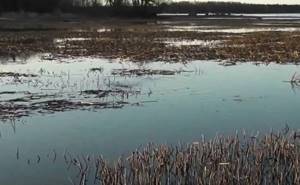
During spawning, fish are united in groups, which include one female and (again, depending on the population structure) 2 - 7 males. Males, which is a feature of predators, are always smaller than females. According to ichthyologists, males larger than 10 kg were not caught. And with age, the percentage of the male-female population changes towards females.
You can distinguish a female pike from a male externally by the shape of the urogenital opening. In the female it is surrounded by a muscular ridge and has the appearance of an oval depression. In males, the opening is represented by an oblong slit.
Pike caviar is quite large. The diameter reaches 2.5 - 3 mm.
The amount of eggs spawned depends on the age and size of the eggs and ranges from 30 to 80 thousand eggs.
The most reproductive unit, capable of producing 100% healthy offspring with the maximum amount of full-fledged eggs, are females aged from 3 to 7 years. As age increases, the amount of complete eggs decreases; spawning does not occur every year (once every 2 years).
After a couple of weeks, larvae emerge from the eggs and at first live off the yolk reserves.
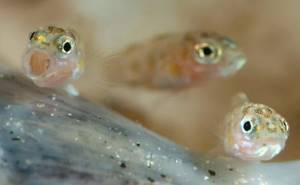
As they grow up, they begin to hunt for small crustaceans and small invertebrates (daphnia, cyclops). Pike larvae begin to show their cannibal abilities when they reach a size of 1 - 1.5 centimeters.
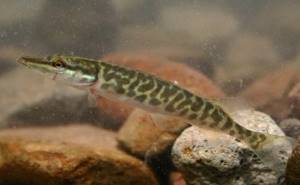
When they reach a mass of 4 - 5 grams and a length of about 5 cm, shorthorned nuts hunt for juveniles of other fish species that hatched later and are much smaller in size. Upon reaching a length of 10 cm, squirrels switch to a 100% predatory lifestyle. Their diet consists mainly of fry of other fish and their own kind.
Once, sitting with a float rod on the shore, I had to watch a small pike hunt for a long time. Having a length of 6 - 7 centimeters, the small fry quite quickly snatched small fry from the flocks of small fry floating past its ambush. He behaved as if he had been hunting for years.
How to determine the age of a pike by weight and size?
Experienced fishermen know how quickly pike grows and how much it gains each year; beginners still need to comprehend these subtleties. It is worth saying right away that the growth periods of the predator vary over the years; at the very beginning, the fry seem to quickly lengthen, then this process slows down significantly.
The life expectancy of pike, according to scientists, is no more than 20 years, and very few individuals survive to this age. This happens more in places remote from civilization and human settlements in Siberia. In other bodies of water, the toothy resident rarely reaches this age.
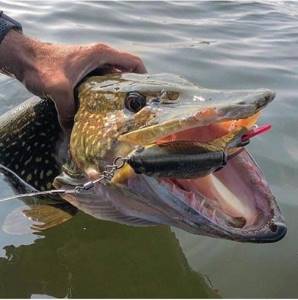
The growth of pike varies from year to year, and the interval itself is very insignificant: the main impetus for growth is given by the spring post-spawning meal. In summer, this process slows down, the next stage will come in the fall, here the predator will not add much in volume. In southern reservoirs the fish will grow a little larger, northern latitudes will slow down this process and the result will be quite minimal.
How to learn to determine the age of pike by length and weight is a question that worries many novice fishermen. There is nothing complicated about this, the main thing is to remember some indicators:
- At 1 year of age, pike will grow to 250-300 mm, and its weight does not exceed 300 g;
- at 2 years old, a toothy predator can weigh 500-1400 g, while its length will be up to half a meter;
- in the third year of life, the fry will grow to 65 cm, its weight will reach 2 kg;
- meter-long giants weighing 8 kg or more indicate that this is an individual with a 10-year history of existence.
It is worth understanding that these calculations are relative and may have some deviations. Weight and length largely depend on the environment, the availability of food supply and its quality. In order for a predator to gain about a kilogram of weight, it needs to find and process at least 20 kg of frogs or fish. That is why the toothy resident usually fills her stomach completely, and only then goes to a secluded place to digest. Sometimes this process drags on for 4 days.
Preferred habitats
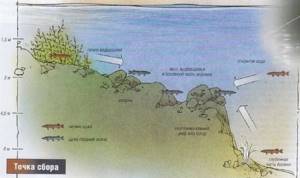
The behavioral characteristics and preferred locations of pike living in large rivers, lakes, reservoirs and small reservoirs are generally similar.
Young pike (grassfish) prefer to stay in the coastal strip. In thickets of plants, accumulations of snags and other areas with many shelters. With age, large fish begin to move to deeper places, stick to holes and pools, periodically going to the shore, to the edges, to the confluence of streams and rivulets to feed. Such exits are often timed to coincide with morning and evening dawns, and at night.
In rivers with a current, it prefers relatively quiet areas with a slow current, where there is an opportunity to hide - snags, boulders, rock deposits, underwater vegetation.
The largest individuals usually stay near the rifts, in the deepest places, and near the mouths of flowing rivers. Medium to small fish gravitate towards the shoreline.
The literature sometimes says that pike is a territorial fish. Ichthyologists studying the behavior of this predator have different data and opinions. Some adhere to this statement, others completely refute the existence of territorial dependence.
I don’t know how right I will be in my judgment, but I believe that pike does not have clear protected habitat boundaries. Its behavior consists of opportunities to occupy the most comfortable and promising places for hunting. The best areas are occupied by strong and large fish, and nearby, in somewhat worse conditions, there are smaller pike. As soon as the best snag is released (caught by a fisherman and eaten), it is occupied by another predator with a high status. Which, by the way, could be from the group that was nearby, or some kind of nomad in the pond.
What does pike eat?
The huntress eats everything and everyone. Among the most popular victims:
- crucian carp;
- perches;
- bream (small);
- minnows;
- roach;
- rudd
The opinion that pike do not eat ruffs because of their spines is a misconception. She eats them for her sweet soul. Moreover, large predators willingly eat their relatives, and not always those that are smaller in size.
Interesting! L.P. Sabaneev in his book described cases when large pikes ate poultry, small animals and completely inedible objects. For example, they snatched linen from the hands of women rinsing it on the shore. There are also reliably known cases of attacks by large pikes on people, especially children.
How long do pike live and what size do they reach?
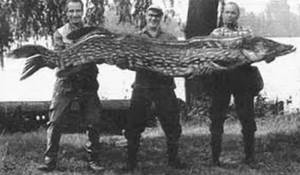
There are legends in literature about the fantastic size and enormous age of pikes. Boris Godunov's pike is 200 years old. The toothy Barbarossa, who lived at the “court” of Frederick the Second, was already 267 years old and had a mass of 130 kg and a length of 6 meters.
Whether to believe this data or not is a purely personal matter. I prefer registered copies. For example, according to official data, a 33-year-old pike was caught in Lake Ilmen on the territory of the USSR in the 1930s. It was about 2 meters long and weighed 35 kg.
Ichthyologists confirm the presence of larger specimens, up to 45 - 55 kilograms.
The largest pikes live in lakes in the north of the European part of Russia. And not in rivers, but in lakes. The further south the body of water, the less chance you have of actually encountering trophy fish.
How old can a pike live?
Based only on data verified by scientists, it is worth noting that the real age of pike can reach 30-33 years. The mass of the predatory fish is about 40 kg, with a length of 180 cm.
On the Internet you can find information that the maximum age of pike in the wild does not exceed seven years, with a maximum weight of 16 kg. This information is fundamentally incorrect and misleads readers. Quite serious studies have been carried out in the USA regarding the maximum age of pike. A special progressive technique has been developed to reduce possible errors to a minimum. As a result, it was possible to find out that the maximum age of local pikes rarely exceeds 24 years. Swedish ichthyologists were able to prove that among pikes, specimens over 15 years of age are quite common. Scientists from Finland have found that a pike usually gains a weight of 7-8 kg by the age of 12-14 years.
Facts about catching giant pike:
- In 1930, in Russia, a giant pike weighing 35 kg was caught on Lake Ilmen.
- In New York State, a huge pike weighing 32 kg was caught on the St. Lawrence River.
- On Lake Ladoga and the Dnieper, fishermen caught pike weighing 20-25 kg. Moreover, catching such a large pike in those places was not considered something unusual.
- In 2013, on one of the lakes in the Republic of Tyva, Russian President V.V. Putin caught a pike weighing 21 kg.
And there are many similar facts; with the development of information technology, their number is constantly growing.
Zhor, or feeding activity of pike
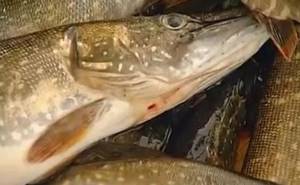
The feeding activity of pike is maximum at a water temperature of 13 - 18 degrees. In such conditions, it feeds most intensively, grows better and, as a result, is better caught with fishing baits.
When the temperature rises above 18 degrees. Celsius, pike activity decreases significantly. It is for this reason that in months of the year such as July and August, there is some calm in most reservoirs.
Hunting trips become short-term, they are timed to early morning, late evening and twilight.
In general, water temperature is the biggest factor influencing the bite. Even more than pressure. Pisces are cold-blooded creatures. All changes in temperature directly affect the metabolism in the body.
It would seem that as the temperature rises, the metabolism increases, food is digested faster, and therefore the duration of the hunt should increase proportionally. In reality, everything happens differently. Everything happens within a clear framework, a norm of reaction to changes in environmental factors.
At low temperatures, pike feed up to a certain point. When lowered, he falls into a stupor and stands in the pits.
At temperatures above normal, it also feeds, but after a short hunt it again goes deeper into more optimal conditions and stays there until a certain moment. It digests what it eats, breathes, becomes overgrown with leeches and no longer feeds. This picture is most common in closed, inland reservoirs.
On the rivers the situation is much better. There are rifts, areas with reverse flows, reaches, and holes. As a result, pike fishing on rivers continues even in hot weather. The main thing is to find places where pike escape from unfavorable conditions.
The thermocline also has a similar effect in summer. In autumn, when the temperature of the water layers has a strongly pronounced “storey”, the capture of trophy pike near the shore is quite understandable.
It is with the establishment of the optimal temperature regime, when “correct” digestion of food occurs, there is no oxygen starvation and the phases that fishermen call “pike zhor” are associated.
The main, mass outings for pike are typical before spawning, 2 - 3 weeks after and on the eve of freeze-up.
But even under ideal conditions, pike do not come out to feed regularly. Another factor comes into play here - the mass of prey eaten. If a predator dined on a large fish, which allowed it to absorb the energy spent on hunting and use it to build a body, then in this case the next active exit may be in a week.
When the toothy fish has managed to eat several fry, which have been digested in a short time, the fish goes in search of food much earlier. Maybe even a second time in a day. But even here there are certain exit hours, which are timed to a certain time of day, and each body of water has its own.
It is for this reason that there are situations when an angler comes to a pond and can confidently say that there is a pike here. He throws bait for a long time, almost hitting the fish on the head, but it doesn’t even react. The spinner leaves in despair, and after an hour or an hour and a half the pike “comes to life” and begins to eat.
For any fish in a designated reservoir, you just need to pick up a key and not rush to conclusions.
Age
Usually the age of a pike is determined by the annual rings on its scales. This technique is quite humane but, unfortunately, does not work when it comes to large pikes. You can accurately determine the age only by dissecting the pike's head and examining its bones (ear). So, during studies of the scales of large pikes, it was discovered that the age of some of them was more than 30 years! Some scientists disagreed with this figure.
Additional studies were conducted in the USA using more advanced techniques. As a result, it turned out that the maximum age of pike is 24 years. On the other hand, Swedish biologists managed to prove that pikes can live more than 16 years. In any case, it can be argued that pike over 15 years old are extremely rare, and even more so over 20 years old.
In Southern Finland it was found that pike weighing 7-8 kg are usually 12-14 years old. But this does not mean that the pike weighs 20 kg. actually quite old. Obviously, this pike had unique growth opportunities throughout its life: water temperature, abundant food resources. She grew much faster than her brothers from the very beginning.
Does pike bite at night?

It depends on what you count at night. I had the opportunity to catch pike during the white nights using surface baits. Not often, but it happened. At night, no pike can be caught. And no matter how they prove to me that they caught the predator with the light of a flashlight on its forehead and this happened more than once, I won’t believe it.
The activity of pike increases with the morning and evening dawns, as well as with the onset of twilight. Further fishing of the water area is futile. As soon as the solar disk completely disappears behind the horizon, the fish begins to behave differently.
Night bites of pike on the girder are rare. Although if you come across it, it’s usually a good specimen. As scientists explain, large, trophy fish come out at dusk to pick up dead fish. Not rotten and smelly, with decaying flesh, but recently fallen asleep. She will not actively chase or jump out from an ambush for prey.
Rare nighttime catches of large specimens with a dead fish or sleeping live bait can be compared with the moments when you go to fish for burbot in the fall, and in addition you come across a pike standing near the shore or in shallow water.
Bony pike or not?
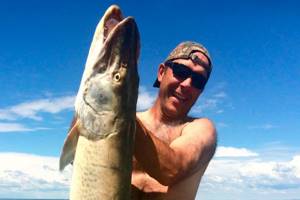
This fish has a fairly developed skeleton, but there are few large bones in it. But on the awns (small bony corners that grow into thin threads) the pike is very rich. Moreover, the older the fish, the less concern they cause to eaters - if the pike’s weight exceeds 4 kg, then the spines grow together into cartilage, which is easily removed from the meat.
We suggest you read: How to catch bleak and how to choose the right tackle
Because of this feature, chefs recommend that people who find it difficult to choose small bones from meat should cook food from minced pike. Its taste and beneficial properties are not very different from whole fish, but still the aroma is somewhat lost, and it is difficult to prepare fragrant fish soup from such a product.
Interesting! Before cooking, it is recommended to remove the spine and large ribs from the pike. This approach will eliminate the need to deal with bones while eating. Small awns along the ridge do not cause any particular problems if the fish has been processed at high temperatures.
Does pike have its own territory?
Ichthyologists who specifically study the life and behavior of pike in nature have found that our common pike is not a territorial fish.
Of course, each individual living in a reservoir has a certain connection to the local territory. The pike moves along this area several times during the spring and autumn seasons. According to scientists, the length of such movements ranges from tens to hundreds of meters, depending on the type of reservoir.
“Travel” is associated with the food supply, the search for optimal oxygen and temperature conditions.
In situations where anglers come across fish with traces of cuts from teeth, lacerations are more likely to confirm the flourishing of cannibalism in pike. But this has nothing to do with active protection of the territory.
Toothed animals, within a certain local area, have their own hierarchy. The largest and most powerful predators occupy the most promising places - boulders, snags, ledges of the coastline and aquatic vegetation. That is, those points that we, fishermen, try to find on a body of water.
As soon as the pike that occupied the strategic point is removed, the next, largest and strongest contender enters the vacant place.
But what about the skirmishes between pikes, about which information will leak out? What's wrong with that? Driving an opponent away from their habitat and feeding area is a completely natural situation in the living world.
Moreover, such an action is often not required. According to scientists, pikes have a highly developed sense of smell. As a result, if we also link here the presence of a strict hierarchy, then an obviously weak fish does not need to provoke the wrath of a strong opponent and receive lyuli for failure to comply with the rules of behavior in pike society.
Another example of the absence of strict territorial behavior in pike is the formation, even short-term, of communities.
This applies to relatively young individuals, since large predators prefer a solitary lifestyle. Collective hunting, driving a school of fry or attacking one large prey is also not observed in pike.
And if we sit down to remember that sometimes spinning anglers manage to get to a pike party meeting, then the conclusion is that only one bites. By the way, at these mass gatherings pike of different sizes and ages gather in a small area.
In principle, the presence of a large number of pikes, sometimes large ones, in a small area can also be explained by the presence of optimal conditions for life, under which there is enough space and food for everyone gathered. At the same time, there are no visible reasons for being aggressive towards relatives.
Structural features of pike
Fish body
Pike is the most voracious predator of our reservoirs, leading a secretive, sedentary lifestyle. It mainly hunts at close range from ambush, guarding its prey while in cover. But during the period of active feeding, she changes her hunting tactics, patrols her grounds, and when she finds a target, she aggressively pursues it.
Her characteristic cannibalism does not allow her to be in the company of her own kind, which is why the toothy one leads a solitary existence. Only during the spawning period our freshwater sharks form small groups of 4-5 individuals.
The almost cylindrical elongated body of Shch. with single fins attached to the tail indicates its ability to develop lightning speed. All plumage is well developed, has a paddle-shaped - rounded shape, which also has a positive effect on the hydrodynamics of the animal.
Small scales closely adjacent to each other form a dense monolithic cover throughout the body, protecting its owner from the sharp teeth of insatiable relatives and other predators.
Mouth, vision, sense organs
The flattened wedge-shaped snout of the pike opens up an additional viewing area, increasing the sector of the binocular - frontal field of vision, with which the pike evaluates the speed of moving objects and the distance to them. Thanks to this structural feature of the skull and high-set eyes, Shch can view the water area above him as well as from the side, and it’s good to see oncoming objects below him. But the wide mouth reduces the angle of vision of the lower space, preventing it from seeing the target at close range if it is below its level.
Anglers who know this feature try not to “feed” bait close to the bottom and use spinning baits based on this. It should be noted that the predator hears as well as sees. Thanks to the lateral line, it can hunt even in muddy water, catching the source of the slightest fluctuations in the aquatic environment from a great distance. An experiment conducted with a blind individual that has been successfully obtaining food for many years indicates how developed and sensitive this organ is in pikes.
The snout, wide and elongated, like a crocodile’s, has a significant gripping area, and the structural feature of the gill membranes, separated from each other, does not prevent the predator from opening its mouth wide, which allows it to swallow large food. Pike is the only freshwater fish capable of swallowing whole a representative of its own species measuring 2/3 of its length. Based on this fact, you should not avoid large baits, especially during the autumn feeding season.
Predator teeth and their replacement
Half the length of the huge head is the mouth, which is literally studded with sharp teeth. Some of them are located on the jaws and consist of sharp fangs of different sizes, set at a short distance from each other. On the tongue and palate there are bristle teeth, representing a fleecy cover of needle-like formations, reminiscent of the bristles of toothbrushes laid in rows.
Shch's teeth do not take part in the chewing process; they serve to hold prey. This main weapon of the predator causes serious injuries to inexperienced fishermen who do not know how to handle it correctly. Even scratches from the small teeth of a small pike are very painful and take a long time to heal, and in addition, the sharp edges of its gill covers can easily cut a finger or hand.
The voracious inhabitant of our freshwater bodies “watches her mouth” and regularly replaces old and damaged teeth.
Many fishermen assume that the change of teeth occurs after spawning, as well as during the full moon, arguing that because of this, Shch. stops feeding and pecking at this time.
The change of teeth in pikes is not periodic, but is a continuous process that occurs throughout their life; naturally, they do not stop eating food during this, which means they can be successfully caught.
The absence of a bite immediately after breeding is explained by the loss of strength of the animal exhausted by spawning, and not by the renewal of teeth.
Cooking methods
Pike dishes are highly valued in cooking because they are tasty, juicy and aromatic. There are many ways to prepare fish, from baking in an oven, frying in a frying pan, boiling in a saucepan to smoking, drying and salting.
How to bake the whole thing in the oven?
To bake a whole pike in the oven, you will need:
- Thoroughly rub the cleaned carcass with fish spices, sprinkle with lemon juice (30 ml) and leave in the refrigerator for 30 minutes.
- Mix 20 grams of chopped fresh parsley with 10 grams of dried and add to 120 grams of sour cream. Lubricate the fish with the resulting mixture.
- Grease the foil with vegetable oil, place the workpiece on it and completely wrap the fish.
- Place the baking sheet with the fish into a preheated oven. Bake the pike at 200 degrees until fully cooked.
How long does it take to bake pike in foil? The fish will be ready in 30 minutes. However, in order for the surface of the pike to become golden brown, you need to remove the foil and continue cooking for another 10 minutes.
How long does it take to bake stuffed pike in the oven? Everything will depend on the size of the fish. A carcass weighing 1 kilogram will be baked for 60 minutes.
How to fry in a frying pan?
To give the dish a more refined and unusual taste, you can fry fresh pike in flour, batter or sour cream.
How to properly fry pike in pieces:
- Cut a kilogram of cleaned carcass into portions no more than 2 cm wide.
- Mix 100 grams of flour with a teaspoon of salt. Roll each piece in flour.
- Place the fish in a hot frying pan with oil. Fry over medium heat on both sides until golden brown.
How to fry pike fillet so that it is juicy? About a few minutes before cooking, you can add a few pieces of butter to the pan. This will give the steaks juiciness. You can also fry pieces of fish without flour, but at the end add sour cream and simmer a little.
To fry frozen pike, the fish must first be thawed, but only halfway, and then you can start frying.
How to stew in a slow cooker?
To stew pike in a slow cooker, you will need:
- Pour 80 ml of vegetable oil into the bowl of the device and add chopped onions. Fry it on the “Fry” mode until translucent.
- Then add fish pieces to the vegetable, add salt and continue frying for another 10 minutes.
- Dilute 30 grams of tomato paste in 350 ml of water and pour into a container, add 3 allspice peas and 6 pieces of black pepper. Mix everything. Close the multicooker and turn on the “Stew” program.
Stewed pike will be ready in 30 minutes. It is served both cold and hot.
How to steam?
To steam pike, you will need to clean the fish, gut it and divide it into portions.
Place the pike in a steamer bowl along with chopped onions (a couple of pieces) and carrots (a piece). Season the ingredients with salt and pepper to taste. Fish should be under vegetables. However, if the pieces are large, then they can be laid out in layers, alternating with vegetables.
How long to steam pike? The fish is cooked for 50 minutes.
How to cook?
To cook pike in a pan, you will need to cut the fish, remove the entrails and cut into pieces. Then the blanks are sent to a container, where chopped onions and carrots are also added. The ingredients are salted and completely filled with water. It is also permissible to add a little spice to taste.
Cook the fish over medium heat, constantly skimming off the foam. In 30 minutes the pike will be cooked.
How to pickle fresh pike?
To pickle fresh pike you will need:
- Clean the carcass, gut it and wash it. After this, the fish is divided into pieces.
- The top of the workpiece should be thoroughly rubbed with salt. Add black pepper and spices to the inside of the abdominal area at your discretion.
- The fish is placed in a pan, covered with a lid, on top of which a pressure is placed.
- The pike is sent to a cool room for 5 days.
Salted pike should be stored in the refrigerator. The shelf life of the product is 30 days.
How to dry it?
To dry pike at home, you need:
- Cut the cleaned fillet into strips.
- Heat 1.5 liters of water, add 5 tablespoons of salt and stir thoroughly until the salt is completely dissolved. You should also add spices to the marinade to taste. Place the fish strips in the resulting solution for 5 hours.
- Cover the dryer tray with paper and place it on top of the workpiece. The pike is dried at a temperature of 60 degrees until fully cooked.
How long will it take to cook the fish? The pike should be dried in an electric dryer for 10 hours.
How to wilt?
To dry pike, the fish should be cleaned, gutted, gills cut off and the carcass washed. Then make cuts along the ridge and open the fish. You don't have to cut off the head.
After this comes the salting stage. To do this, you need to rub the carcass inside and out with salt. Place the fish in a bowl, adding another layer of salt on top. The container is covered, and pressure is placed on top. Pike is salted for 3 to 20 days, depending on how many fish are in the bowl. After this, the pike should be thoroughly washed and soaked in cold water (the liquid should be changed every couple of hours). As soon as the fish starts to surface, the pike is wet.
Now the fish needs to dry. To do this, it is hung by its tail. In the morning, the carcass should be sprinkled with vinegar and wrapped in a piece of gauze. In this form, the pike is dried for 3 days. The place should be dark.
How to smoke?
There are two ways to smoke pike: cold and hot. However, before smoking, the fish must be marinated (how to do this was described above in the corresponding section).
Hot way
To smoke pike using the hot method, you will need to pour three handfuls of sawdust into the bottom of the smokehouse. Send the smokehouse to the fire. Place a tray on top of the wood chips where the fat will drain. Large pieces of fish are placed on slats, and small pieces are placed on skewers. After this, the smokehouse is covered with a lid.
When white smoke appears, the fish should be smoked for 30 minutes. After this, the lid should be removed to allow excess moisture to escape. When the fish dries, the lid must be closed again. After this, the pike is cooked for another 20 minutes.
You can determine the readiness of the fish by the meat. It should be matte and white.
Cold way
Cold smoking takes much longer than hot smoking. After salting, the pike should be hung out in the fresh air to dry. Then the carcasses can be sent to the smokehouse.
When the fish is placed in the smoking chamber, it is necessary to light a fire in the firebox and close the smokehouse for three days. If the carcasses are small, then the cooking process will last no more than a day and a half.
The temperature in the smokehouse should not exceed +30 degrees.
How to cook on the grill?
To cook pike shish kebab on a grill or coals, first marinate the fish in a convenient way (how to do this was described above). Some chefs do not marinate pike for grilling.
To grill pike on a grill, you need to:
- Wrap the fish steaks in foil and place on the grill.
- Small pieces of pike will be ready after 20 minutes. If the fish is fried whole, the cooking process will take approximately 60 minutes.
Pike baked on a charcoal grill is prepared as follows. Place the steaks on a grill greased with vegetable oil and place on the coals. In this case, the carcass pieces will have to be constantly turned over so that they are evenly fried. The pike shish kebab will be ready in 10 minutes.
How to cook over a fire?
To cook pike over a fire, clean the fish, remove the entrails and cut the carcass into pieces. Place the steaks in a deep bowl. Add 250 grams of sour cream and seasoning to taste. Cut the onions into rings and add to the rest of the ingredients.
Place 800 grams of potatoes on the fire. Thread the fish pieces onto skewers and place on the coals. The pike will be ready when it is completely covered with a golden brown crust.
How to cook pike liver?
Pike liver is often baked in the oven, fried in a frying pan in batter, along with mushrooms, cream, herbs or vegetables, and also cooked in a slow cooker and microwave.
Pike liver tastes like pollock or cod liver. However, it is much more tender and not very greasy.
You can also make pate for sandwiches from pike liver. The product is included in salads or used for cooking fish soup.
How to prepare?
Before cooking, the pike must be prepared. To do this, the carcass is cleaned, mucus and entrails are removed, and the gills are cut off.
How to quickly remove scales?
To quickly and easily remove scales from pike in an apartment, it is necessary that the fish be fresh or alive, since scales are more difficult to remove from a frozen carcass.
How to clean frozen pike from scales? To do this, you will need to secure the head of the fish with something so that it does not slip during cleaning. Next, holding the tail, you need to cut off the skin with scales in a thin layer with a sharp knife. You need to move from the tail to the head.
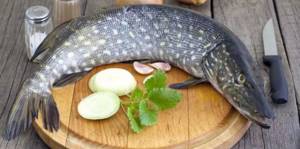
Boiling water
To properly clean a pike from scales with boiling water, you need to hold the carcass by the tail. The fish is doused with boiling water, first on one side and then on the other. This will make it easier for the scales to come away from the skin.
After thermal exposure, the fish must be cleaned in the same way as described above.
With a knife
It is necessary to clean the scales with a knife from the tail part against their growth, holding the fish by the tail.
Under no circumstances should you put your fingers into the fish's mouth, as there are sharp teeth there that can seriously injure you.
To prevent the scales from scattering around the room, the fish can be placed in water. This way you can easily clean fresh pike at home.
Stocking
To remove the skin from a pike along with its scales, you can use a method called “stocking”:
- To begin with, the carcass should be cleaned of scales and washed under running water.
- Then make cuts near the gills. The place that connects the back and head must be left intact. Gut the fish and wash it.
- Pry the skin near the head and pull all the way to the tail.
If the skin is difficult to separate from the meat in some places, it can be lightly trimmed with a knife.
How to remove mucus from pike?
To get rid of mucus, the pike must be thoroughly rinsed under running water. For the best effect, the water should be warm or hot.
How to cut gills?
It is necessary to cut out the gills with extreme caution, as they have sharp spines that can cause injury.
You need to cut off the gills using a narrow and long knife. To do this, you will need to carefully protrude the holes located above the gills and trim them. You can also remove the gills with scissors.
How to gut and cut?
To properly and quickly gut and then cut up fresh pike, you should adhere to the following recommendations:
- After cleaning the scales, you need to rip open the abdominal part, removing the insides and black film.
- In this case, it is necessary to act extremely carefully, without touching the gallbladder. If it breaks, the meat will taste bitter. If the bubble does break, the fillet should be thoroughly rinsed under water.
- Then you need to remove the gills and blood clots inside the carcass.
- Upon completion of gutting, the fish must be thoroughly rinsed with water.
After removing the entrails, you need to fillet the pike. In principle, this is not difficult to do. However, the cutting of the carcass is carried out differently depending on what is planned to be prepared from the pike in the future (for example, cutlets, steaks).
How to cut boneless pike:
- Cut off the head.
- Place the fish on its side and make a longitudinal cut on the back along the spine line. In this case, the dorsal fin should be under the blade.
- Deepen the knife under the fillet, reaching the ribs. Next, you need to go along the length of the cut again without cutting the bone.
- Using a knife, separate the fillet from the rib bones on both sides. You need to cut the meat, moving from the head to the tail (due to this, the fillet comes off much easier and faster).
- You can pick out bones from pike fillets either with your fingers or with tweezers if the bones are too small.
If you cut pike in this way, the fillet is suitable for frying steaks, as well as for preparing minced meat for cutlets.
How to cut pike for stuffing? To remove scales, in this case you cannot use boiling water or freeze the fish. It is better to use a sharp knife or scraper to clean the fish. The fins are removed at the cleaning stage or directly during skinning. After this, it is necessary to make an incision slightly below the gills and remove the insides along with the film. In this case, you need to try not to damage the abdominal area. After removing the insides, the carcass should be thoroughly washed inside and out. After this, you can start stuffing the pike.
How to get rid of the smell of mud and silt?
If your pike smells like mud or silt, you can get rid of such odors in several ways:
- Mix 3 tablespoons of salt in a liter of water and place the fish there for 3 hours.
- In a liter of water, dilute 3 tablespoons of salt and a tablespoon of vinegar. Instead of vinegar, you can use lemon juice. Dip the pike in the resulting solution for a couple of hours.
- You can also rub the surface of the carcass with lemon.
There is another proven method for eliminating the unpleasant smell of mud. To do this, the fish should be cleaned, washed, cut into pieces and placed in a container. Sprinkle the steaks with chopped bay leaves and cover completely with warm water. In this form, the pike should lie for 60 minutes. After this, the liquid must be drained. There is no need to rinse the carcass.
How to defrost fish?
Frozen pike must be transferred from the freezer to the refrigerator compartment on the lowest shelf. The fish will defrost overnight. This method is considered the most correct, although it takes a lot of time.
If waiting 8–10 hours is not possible, you can put the carcass in a bag, tie it, put it in a container and place it under a stream of cold water. In about a couple of hours the fish will defrost. However, this method is not entirely water-efficient. To avoid wasting water resources, the fish, wrapped in a bag, is placed in a bowl of cold water. But in this case, the fluid will have to be changed every 20 minutes.
Pike is not suitable for defrosting in the microwave.
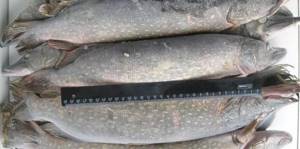
How to marinate?
To cook pike deliciously, you need to know how to marinate it properly. Each cooking method has its own nuances.
How to marinate pike for baking in the oven? The cleaned and cut into pieces carcass should be poured with the juice of half a lemon and sprinkled with salt and pepper to taste. Place a couple of lemon slices and a dried thyme sprig on top and inside of each piece of fish. Wrap the pieces in foil and place in the refrigerator for 60 minutes.
How to marinate pike for frying in a frying pan:
- To do this, you can use lemon juice or soy sauce, into which pieces of fish are dipped and marinated for 30 minutes. If you use soy sauce, then you do not need to salt the steaks.
- You can also sprinkle the carcass with salt and pepper to taste and leave for 20 minutes to marinate.
- Mix lemon juice with 80 ml of olive oil, salt and spices for fish at your discretion. Lubricate the surface of the fish with the resulting mixture and place the carcass in the refrigerator compartment for 30 minutes.
How to marinate pike for barbecue on the grill? In a large bowl, combine 650 grams of chopped zucchini, 150 grams of sun-dried tomatoes, a couple of chopped garlic cloves, 100 grams of onion sliced into rings, freshly squeezed orange juice, a couple of chopped rosemary sprigs, 20 grams of honey and 60 milliliters of olive oil. Place the fish pieces into the resulting marinade and mix. The pike is marinated for 30 minutes in the refrigerator.
How to marinate pike for hot smoking:
- Mix a tablespoon of salt with black and allspice, dried dill and Provençal herbs (spices are taken in ½ tsp each). The amount of ingredients for the marinade is indicated for 1 kg of fish.
- Thoroughly rub the carcass with the mixture both inside and outside.
- Place the workpiece in a bag and put it in the refrigerator overnight.
How to marinate pike for cold smoking? Stir approximately 12 grams of salt in a liter of water and place the fish in it. The liquid should completely cover the carcass. The pike is marinated in the refrigerator for 3 hours.
How and what to stuff?
You can stuff pike with cream cheese, eggs and fresh mushrooms. Often, stewed vegetables are placed inside the carcass along with pieces of lard and white loaf pulp. Lard makes it possible to saturate the fish with fat, and the skin remains juicy.
How to properly stuff pike? It is most convenient to do this from the side of the ridge. The scales must be cleaned from the head. Make a couple of cuts along the spine. Carefully push the meat away, pulling the backbone along with the fins and entrails towards you. Then the fish is stuffed with prepared products.
Stuffing frozen pike will not work. To do this, the fish will have to be defrosted.
How to make minced pike?
To make minced pike, the fish is first cleaned, gutted and filleted. The meat, of course, should be removed from the bones, and then twisted through a meat grinder or chopped with a blender.
It is advisable to mince the minced fish through a meat grinder a couple of times. This is necessary in order to completely eliminate small bones that may have been missed when removing bones from the fillet. This will make the minced meat more tender and juicy.
If onions are added to the twisted meat, the minced meat will have to be twisted again along with the onion.
